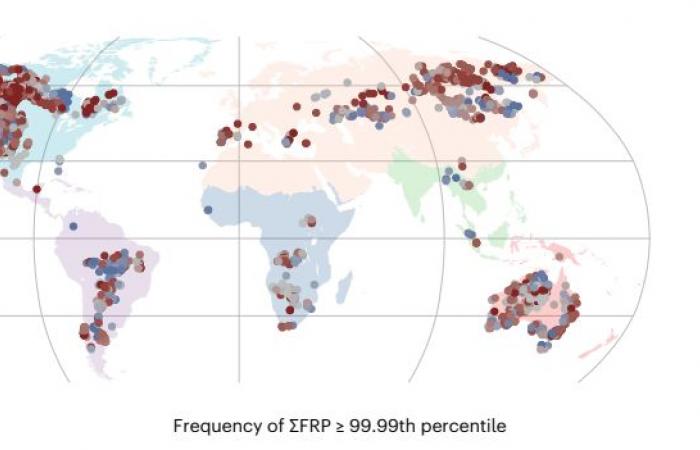The climate change is radically transforming the landscape of global forest fireswith a significant increase in both the frequency and intensity of extreme events. This phenomenon not only threatens biodiversity and natural ecosystems, but also has serious implications for the safety of human communities and the global economy. Over the past two decades, the world has witnessed a rapid escalation of forest fires, highlighting the urgent need to understand and address the underlying causes.
Wildfire trends
A recent study published in Nature Ecology & Evolution analyzed satellite data from 2003 to 2023 to evaluate the evolution of forest fires on a global scale. The results were surprising: according to the researchers, Energetically extreme fires have more than doubled in both frequency and magnitude over the last 20 years. This worrying trend has been particularly evident in the most recent six years, with a peak in intensity observed after 2017. This increase has been noted especially in the regions of Nearctic and of theAustralasia/Oceaniasuggesting a direct correlation with ongoing climate change.
The consequences of fires Extremes are being felt around the world, but some regions have been hit particularly dramatically. The temperate coniferous forests and the boreal areas in North America And Russia have seen a significant increase in large fires. These events not only irreparably damage local ecosystems, but also have devastating effects on the regional economy, affecting key sectors such as agriculture, tourism and water resources management.
Causes of forest fires
According to experts, the increase in forest fires it is largely attributable to rising global temperatures and the resulting dryness of forests. THE climate changes they created drier and hotter conditions, promoting burning and increasing the susceptibility of forests to fires. This is particularly evident in boreal regions and temperate conifers, where vegetation has become more susceptible to fires of greater intensity and duration.
The management of forest fires and emergency response planning must be revisited in light of these new trends. It is essential to implement strategies adaptation And mitigation that improve the resilience of communities and ecosystems to extreme fires. This includes investments in advanced fire prevention and control technologies, as well as public policies that promote environmental sustainability and the reduction of greenhouse gas emissions.
Studies like the one conducted on Nature Ecology & Evolution they provide a solid scientific basis for developing effective policies and protecting natural resources for future generations.
Continue reading on MeteoWeb






